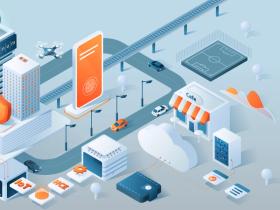Your Guide to Customer Development: What, Why & How?
Published: May 2, 2022
27 min read
In this article, you'll learn:
1
📖 What is Customer Development?
2
👍 Why Customer Development Is Important
3
🗓 When Should CustDev Become a Part of Your Product Development?
4
⚙️ Customer Development Process: How to Implement?
5
📝 Customer Discovery
6
👌 Customer Validation
7
👥 Customer Creation
8
🏢 Company Building
9
💡 Takeaways
However, having much time and resources, Google can allow itself to fail. But Startups usually don't have that luxury. By using the CustDev model you maximize your chances to create a Product that no one needs, choose the wrong market for it or match it with an incorrect customer portrait.
So in this article, we will:
- Describe the structure of the Customer Development model.
- Show how helpful it can be for your Startup.
- Explain how you can implement Customer Development on different stages of the Startup lifecycle.
- Give a comprehensive guide to all the steps of the CustDev process.
Let’s start!
📖 What is Customer Development?
The concept was introduced by Steve Blank, the author of the reference at the very beginning of this article. If we try to describe the Customer Development model in his quotes, it will look like this:
- “The dumbest person with a fact trumps anyone with an opinion”.
- “There are no facts inside the building so get the heck outside”.
To put it shortly and simply, this model is all about reaching your target audience and validating your market/customer assumptions. It allows building your Product not around your own assumptions but based on insights directly from your customers.
How applying CustDev to your Product development may help you? Let’s see!
👍 Why Customer Development Is Important
The model has quite a distinct aim — to ensure that your Product matches the market need / the need of your target audience.
While staying inside the building — literally and metaphorically — you’re the hostage of your own assumptions, theories and fantasies.
Business Customer Development for Startups provides you with a strategy for reaching out to your customers, matching your Product with the right market and, eventually, turning your company into a fully-fledged organization.
Can any Startup use the CustDev model? What if you’re already in the middle of product development? Is it too late? Actually, not and here’s an explanation why!
🗓 When Should CustDev Become a Part of Your Product Development?
Flexibility is undoubtful advantage of the Customer Development model. It means that this process doesn’t have any rigidly fixed place on the Product development timeline that can’t be altered.
However, the general recommendation is that you should start CustDev at the early stages of the Product Development process* to have the most benefits in the long run.
*We know there are different approaches to defining stages of the Product Development process. Since it’s not the topic of this article we won’t start a discussion about that and will use this model.
According to this scheme, Idea Screening and Feature Specification seem like perfect stages to start Customer Development. At these stages, you’ll be defining your Product’s competitive strategy, features, value proposition.
Nevertheless, you may use the CustDev model at further stages as well:
- If you have already built and released the Product but it managed to reach only a small user base and has insufficient market traction. With the help of Startup Customer Development, you can validate your prospects and UVP/USP to get a bigger piece of market share and prompt sales.
- Even after you have found a niche (or even a Product-Market Fit) that allows you staying afloat and re-investing in your company, you’ll need a scaling strategy. CustDev can help you validate marketing and sales roadmap to reach new prospects and establish stronger ties with existing ones.
What exactly should you do and what results to expect? You’re about to find out!
⚙️ Customer Development Process: How to Implement?
Some people think that CustDev is just a newish and fancy word for customer interviews. However, this concept is much wider than this.
CustDev is not only a theoretical model but also a set of very practical and usable tools. In this paragraph, we will take a look at the business Customer Development for Startups from these 2 perspectives — as a theoretical model and as a set of practical steps.
Let’s take a closer look at each step!
📝 Customer Discovery
What lies at the heart of any successful Startup? A Problem, as we’ve highlighted in our article on product idea evaluation. Thus, the first step of the Startup Customer Development is just about figuring out whether you’re going to solve a real problem for real customers.
If your concept looks holistic from these 3 perspectives, it means you can move to the next step of Customer Development — Customer Validation.
👌 Customer Validation
This is the second and the last step in the Search stage of Startup Customer Development.
To put it short, your main goal now is to verify your hypotheses and business model that you’ve created during the previous stage. By the end of Customer Validation, you should have a scalable and repeatable business model that will enable a quick growth for your company.
For a better understanding of this step you can also watch the explanation of Customer Validation by Steve Blank:
However, it still may turn out that some of your assumptions regarding customer segments, the problem itself or your solution are wrong. Then you’ll have to pivot — make some critical changes regarding the problem or customers. If it’s your solution that needs some changes or updates it’ll be called an iteration.
Customer Validation stage can be repeated as many times as you need to verify your business model. Moreover, you will probably have to go all the way back to Customer Discovery stage, take a new look at the Business/Startup Canvas and rethink your previous hypotheses.
👥 Customer Creation
By this time you should have already validated the chosen problem, your solution and customers. When you move to the Customer Creation step, you enter the Execution stage of the Customer Development process. It means that from this time on it’s all about scaling and turning your Startup into a functional company.
Your goals for the Customer Creation stage are:
- Define your year one objectives.
- Develop company and product positioning.
- Launch your product.
- Create a demand for it.
During the Search phase, you’ve found out who needs your product and how to reach them. However, these were mostly early adopters. At Customer Creation, your marketing and sales spending is about to dramatically increase since you’ll be reaching out to a much wider audience.
Together with launching your product you should also develop and implement a demand creation strategy.
Step 4: Demand Creation
Demand creation is an important step of the CustDev process for any market. While working in existing and resegmented markets you’ll need it to get your market share. In new markets - to develop them.
Pay attention, that your demand creation strategy won’t be the same for different markets. If you have competitors, it should be focused on delivering a USP that differs you from other Startups and Companies in the market. For new markets, we’d recommend focusing on a UVP to reveal customers’ hidden need.
Demand creation activities go together with PR and marketing ones. For example, you may use such tools as:
- LTOs (limited-time offers).
- User-generated content campaigns.
- Teasers.
- Outreach activities.
- Promotion through early adopters and evangelists.
- Case studies that illustrate the value of your products and scenarios to use them.
Unlike the previous 2 stages of Startup Customer development, the Customer Creation stage doesn’t have very rigid requirements to move to the next stage. The two main indicators to observe are:
- You continuously grow your user base from few to many and increase the market share.
- Your business model proves to be viable, i.e. repeatable and scalable.
During this stage, you’ll get really reliable information on whether you have correctly defined your audience, product and market. If you succeed in creating demand for your product and reaching out to a wider audience you’re finally ready to move to the Company Building stage.
🏢 Company Building
We're almost at the finish line! The last step of the Customer Development model is all about transforming your Startup into a functional fully-fledged organization. It actually means 3 things:
- Growing a mainstream customer base.
- Building a company culture.
- Reviewing management infrastructure and establishing formal departments. Ensuring that your company works in an Agile manner.
Entering this stage of CustDev indicates that you’re moving from a learning and discovery method to a mission-oriented methodology. As a result, your company should take a distinctly defined place among the market and customers.
Here are the steps that will bring you to this goal!
Step 1: Build a Mainstream Customer Base
You can’t rely on your early adopters forever. Reaching out to so-called mainstream customers is an important part of the scaling process. How are these 2 types of users different?
Also, as you take your business to the next level, you’ll need more people who are pragmatic, hard-working, reliable and agile rather than charismatic leaders and visionaries who live purely on enthusiasm.
You will need such employees to set up functional departments within your Company. It will finally let you evolve from the “everyone does everything” situation to agile departments working in their specialization.
Here are a few general advice on building departments as you grow your Startup into the Company:
- Don’t try to mimic other companies “just because they do so” and create departments that correspond with your goals and mission statement.
- Every new department should come with a specific mission and set of goals and responsibilities that complement the overall aims and mission.
- Make sure you’re building Agile, fast-response departments. They shouldn’t depend on data and permissions from executives and other departments too much and should be able to make the most decisions “on site”.
- Encourage information gathering and sharing within and between departments to promote leadership.
And never forget that the Company Building stage of Customer Development is actually never over. Making growth a stable and continuous process within your Company is critically important because organization that stop learning and developing are the organization that eventually die.
💡 Takeaways
You’ve made it all the way to the end of our CustDev Guide! We really hope that now this process doesn’t seem like a riddle to you.
Considering that the full Customer Development may take months or even years, you may think of it more as an mindset. Yet, CustDev also provides you with a specific tools which makes it more practically useful than many other techniques.
For an even better understanding of the topic, we recommend checking the folowing materials:
- Books:
- The Four Steps to the Epiphany by Steve Blank.
- The Startup Owner's Manual by Steve Blank and Bob Dorf.
- The Entrepreneur's Guide to Customer Development by Brant Cooper and Patrick Vlaskovits.
- Lean Customer Development by Cindy Alvarez.
- Online courses:
- The Lean LaunchPad by Steve Blank.
- Videos:
- Steve Blank’s YouTube channel.
- Presentations:
Are you looking for a reliable Tech Partner to join you for PoC, Prototype or MVP development? Contact us and we’ll develp your app or website from scratch or join you at any stage of product development!
Was it helpful?
Read also

What is Prototyping in IoT and Some Practical Advice

What is IoT Device Management?

How to Make your React Native Application Accessible to ALL, not just to MANY
Our clients say
![Stormotion client Max Scheidlock, Product Manager from [object Object]](/static/33294af91c38256bcd5a780ddc41861a/b0e74/max.png)
They understand what it takes to be a great service provider, prioritizing our success over money. I think their approach to addressing ambiguity is their biggest strength. It definitely sets them apart from other remote developers.
Max Scheidlock, Product Manager
HUMANOO
